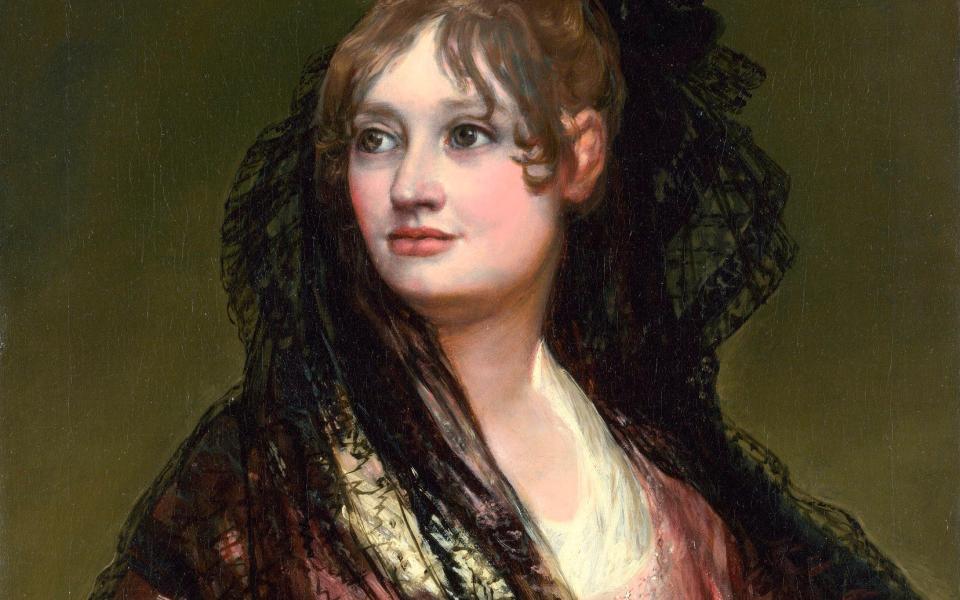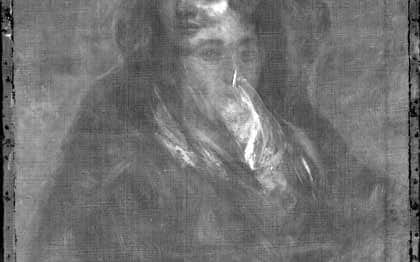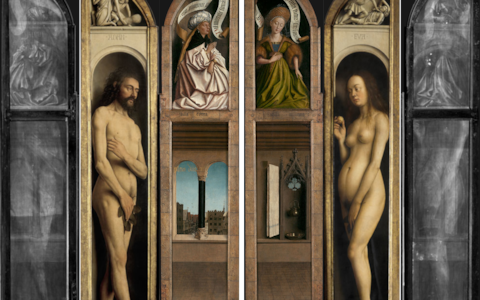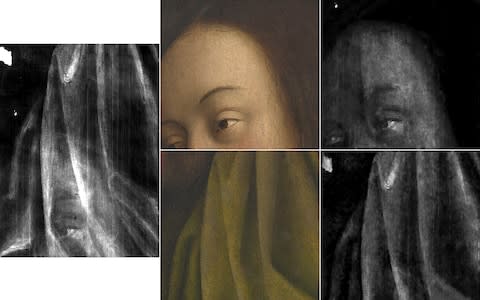Hidden works of Goya, Van Gogh and Van Eyck could be discovered using artifical intelligence

Lost works of Goya, Van Gogh and Van Eyck could be discovered after scientists developed an artificially intelligent algorithm which can spot earlier images in x-rays of paintings.
Conservators and art historians often scan artworks as many great masters reused their canvases. The images can give hints of the original composition, or even reveal an entirely different subject.
But until now it has been tricky to tease apart the underlying and overlying images because they were all merged together in the x-ray.
Now computer scientists at University College London has developed a programme that can sort the images, effectively separating the artworks from each other.
The team is currently working with the National Gallery on Portrait of Dona Isoabel de Porcel by Francisco Goya, which was shown to have been painted over the figure of a young man in uniform.

Dr Miguel Rodrigues, of UCL’s Department of Electronic and Electrical Engineering, said: “We’re hoping to use advances in artificial intelligence to solve some of the problems and mysteries in the art world.
“Artists like Van Gogh regularly painted over their work. Probably around one third of Van Gogh’s paintings contain concealed images waiting to be discovered.
“X-rays can show that something is there, but the images are all entangled and we can use this programme to really see how things would have looked.”

The team has tested the algorithm on high-resolution x-rays of the Ghent Altarpiece, a series of hinged panels painted by Hubert and Jan van Eyck in the 15th century, which currently resides in St Bavo’s Cathedral in Belgium.
The Altarpiece is painted on both sides so scientists could x-ray one side, see both images beneath and then check that the algorithm could successfully divide the paintings correctly.
In one test, the programme successfully separated an image of Eve from an angel on the other side.

By sorting the complex x-ray images, the new algorithm can also help art historians protect and restore the pieces.
Hélène Dubois, Head of the Conservation Project of the Ghent Altarpiece, Royal Institute for Cultural Heritage, in Brussels, said: “The application of AI to x-ray image processing will provide very useful tools to decrypt complex technical images.
“The structural weaknesses of the wooden supports and of the ground and paint layers could be diagnosed with more precision.
“These images will also help to understand the brothers Van Eyck’s techniques and the changes carried out in the course of the successive execution of this unique masterpiece.
“This new development of the use of the traditional x-ray has great potential for countless applications in conservation of irreplaceable works of art.”
Details of the Ghent Altarpiece test were published in the journal Science Advances.

 Yahoo News
Yahoo News 